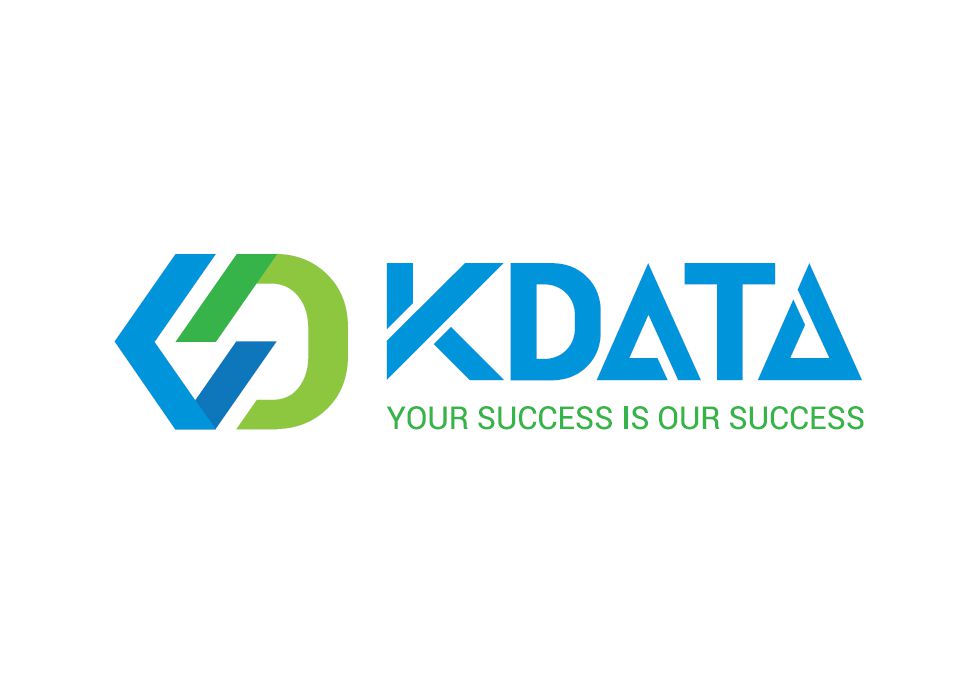


 © Reuters. FILE PHOTO: A money changer counts U.S. dollar banknotes at a currency exchange office in Ankara, Turkey September 27, 2021. REUTERS/Cagla Gurdogan/File Photo
© Reuters. FILE PHOTO: A money changer counts U.S. dollar banknotes at a currency exchange office in Ankara, Turkey September 27, 2021. REUTERS/Cagla Gurdogan/File Photo By John Kemp
LONDON (Reuters) -Rising interest rates and a rapidly appreciating currency are exporting the U.S. inflation problem and threaten to send the rest of the global economy into recession as other central banks are forced to raise their own rates. * U.S. overnight interbank interest rates have risen by 300basis points over the last 12 months, the fastest increase since1989 and before that 1981. * Traders anticipate the central bank will lift its targetfor the federal funds rate by another 150 basis by April 2023. * Yields on benchmark 10-year U.S. Treasuries have climbedto 3.80%, the highest level for more than 12 years, on theexpectation rates will have to remain higher for longer tocontrol inflation. * The U.S. Treasury yield curve between 2-year and 10-yearnotes is more inverted than at any time since 1982, a sign ofhow tight monetary policy has become. * Reflecting higher yields in the United States, the dollarhas appreciated by more than 10% against a trade-weighted basketof other major currencies in the last year. * The dollar's real effective exchange rate is the strongestsince January 1986 and in the 96th percentile for all monthssince 1973.
U.S. inflation, employment and business activity are all stronger than in other major economies in Europe and Asia, encouraging the central bank to lift interest rates faster in an effort to bring price increases under control.
But rapidly rising rates at the core of the financial system (in this case the United States) are rippling outwards and heightening instability on the periphery (the United Kingdom, European Union, China and emerging markets).
Central banks in the United Kingdom, European Union, India and other emerging markets are all raising interest rates or intervening to support their currencies even though local conditions are far weaker.
CORE AND PERIPHERY
Rapidly rising U.S. interest rates have been one of the primary triggers of international financial instability in the last 40 years.
Chartbook: U.S. interest rate and exchange rate cycle
Latin America's debt crisis in 1982, the dollar overvaluation crisis in 1984/85, Mexico's default and devaluation in 1994, Asia's financial crisis starting in 1997 and Russia's default in 1998 were all ignited by rising U.S. rates.
The U.S. central bank's congressional mandate requires it to focus on controlling inflation and promoting employment in the domestic economy.
But as the interest rate setter for the world's reserve currency, the Federal Reserve is also at the centre of a system of central banks that are under pressure to follow its decisions, whether locally appropriate or not.
If the U.S. central bank raises interest rates to counter domestic inflation, other central banks must follow or see their currencies depreciate and inflation rise via higher prices for energy and other imports.
If the Federal Reserve cuts interest rates, other central banks must do so as well, or risk currency appreciation and the loss of competitiveness, output and jobs.
Policymakers and commentators often talk about monetary policy as if each country makes its own decisions with complete sovereignty.
In practice, central banks are linked in a system with Fed at centre as a policy-maker and others on periphery as policy-takers, with far fewer degrees of policy freedom.
If countries try to deviate too far from the Fed's easing and tightening cycle, they tend to run into an inflation crisis, a currency crisis, a debt crisis, or all three.
GLOBAL SLOWDOWN
Conditions in the peripheral economies are not necessarily the same as in the core of the financial system.
In this case, the United States is experiencing rapid inflation and still has very high employment and a relatively strong business conditions.
But China's economy has relatively low inflation and is struggling as a result of repeated city-level lockdowns to control the spread of coronavirus.
The United Kingdom and the European Union have high inflation but are already close to or in recession because of the high cost of energy and spillovers from Russia's invasion of Ukraine.
Most of the major emerging markets are in a similar position with high inflation but slowing or falling business activity.
In effect, the business cycle is much more mature in the other major economies with a cyclical slowdown already underway.
Rapid interest rate increases to control inflation in the core are not necessarily appropriate at the moment in the peripheral economies.
But interest rates are still rising on the periphery; central banks have no choice but to follow the Fed because their currencies are depreciating, increasing cost of dollar-denominated imports and driving their inflation rates higher.
GREATER VOLATILITY
In financial markets, the cyclical rise and fall of interest rates and yields in the United States induces a cyclical and destabilising flow of capital towards and then away from the peripheral economies.
When U.S. rates are low, capital flows to the periphery accelerate in search of higher returns; when U.S. rates rise, capital flows slow or reverse, putting downward pressure on asset prices in peripheral economies.
Relatively small changes in financial conditions in the core are amplified on the periphery, where indebtedness is often higher, markets are shallower, liquidity is low, and policy flexibility is lower.
Rate changes in the United States always have potential to induce instability in other economies via this financial channel; the effect is especially severe when the Fed lifts them rapidly to regain control of the inflationary process.
U.S. rate raising cycles in 1980, 1982, 1984, 1989, 1994, 1999 and 2022 all contributed to financial instability and economic slowdowns in other countries.
"As central banks across the world simultaneously hike interest rates in response to inflation, the world may be edging toward a global recession in 2023," the World Bank has warned.
"Central banks around the world have been raising interest rates this year with a degree of synchronicity not seen over the past five decades," it noted ("Risk of global recession in 2023 rises", World Bank, Sept. 15).
The bank cautioned about a possible "string of financial crises in emerging market and developing economies" as a result of tighter monetary conditions.
The risks to other economies from inflation and rising interest rates in the core have been understood by policymakers and investors for decades.
But as long as the Fed’s mandate requires it to focus exclusively on domestic inflation and employment, ignoring international spillovers, and the dollar remains the main reserve currency, rising rates in the United States will continue triggering instability elsewhere.
John Kemp is a Reuters market analyst. The views expressed are his own
EUR/USD
1.0658
-0.0008 (-0.07%)
Summary
↑ SellMoving Avg:
Buy (0)
Sell (12)
Indicators:
Buy (2)
Sell (3)
EUR/USD
1.0658
-0.0008 (-0.07%)
Summary
↑ SellMoving Avg:
Buy (0)
Sell (12)
Indicators:
Buy (2)
Sell (3)
GBP/USD
1.2475
-0.0015 (-0.12%)
Summary
↑ SellMoving Avg:
Buy (0)
Sell (12)
Indicators:
Buy (0)
Sell (10)
USD/JPY
157.91
+0.12 (+0.07%)
Summary
↑ BuyMoving Avg:
Buy (12)
Sell (0)
Indicators:
Buy (9)
Sell (0)
AUD/USD
0.6469
-0.0003 (-0.05%)
Summary
NeutralMoving Avg:
Buy (10)
Sell (2)
Indicators:
Buy (2)
Sell (3)
USD/CAD
1.3780
+0.0003 (+0.03%)
Summary
↑ BuyMoving Avg:
Buy (12)
Sell (0)
Indicators:
Buy (7)
Sell (0)
EUR/JPY
168.32
+0.10 (+0.06%)
Summary
↑ BuyMoving Avg:
Buy (12)
Sell (0)
Indicators:
Buy (9)
Sell (0)
EUR/CHF
0.9808
+0.0001 (+0.01%)
Summary
NeutralMoving Avg:
Buy (0)
Sell (12)
Indicators:
Buy (3)
Sell (2)
Gold Futures
2,295.80
-7.10 (-0.31%)
Summary
↑ SellMoving Avg:
Buy (0)
Sell (12)
Indicators:
Buy (0)
Sell (9)
Silver Futures
26.677
+0.023 (+0.09%)
Summary
↑ SellMoving Avg:
Buy (2)
Sell (10)
Indicators:
Buy (0)
Sell (9)
Copper Futures
4.5305
-0.0105 (-0.23%)
Summary
↑ BuyMoving Avg:
Buy (10)
Sell (2)
Indicators:
Buy (8)
Sell (1)
Crude Oil WTI Futures
81.14
-0.79 (-0.96%)
Summary
↑ SellMoving Avg:
Buy (0)
Sell (12)
Indicators:
Buy (1)
Sell (7)
Brent Oil Futures
85.62
-0.71 (-0.82%)
Summary
↑ SellMoving Avg:
Buy (1)
Sell (11)
Indicators:
Buy (1)
Sell (7)
Natural Gas Futures
1.946
-0.009 (-0.46%)
Summary
↑ SellMoving Avg:
Buy (0)
Sell (12)
Indicators:
Buy (0)
Sell (5)
US Coffee C Futures
213.73
-13.77 (-6.05%)
Summary
↑ SellMoving Avg:
Buy (3)
Sell (9)
Indicators:
Buy (0)
Sell (10)
Euro Stoxx 50
4,920.55
-60.54 (-1.22%)
Summary
↑ SellMoving Avg:
Buy (4)
Sell (8)
Indicators:
Buy (1)
Sell (7)
S&P 500
5,035.69
-80.48 (-1.57%)
Summary
↑ SellMoving Avg:
Buy (0)
Sell (12)
Indicators:
Buy (0)
Sell (7)
DAX
17,921.95
-196.37 (-1.08%)
Summary
↑ SellMoving Avg:
Buy (0)
Sell (12)
Indicators:
Buy (1)
Sell (6)
FTSE 100
8,144.13
-2.90 (-0.04%)
Summary
SellMoving Avg:
Buy (5)
Sell (7)
Indicators:
Buy (2)
Sell (4)
Hang Seng
17,763.03
+16.12 (+0.09%)
Summary
↑ SellMoving Avg:
Buy (0)
Sell (12)
Indicators:
Buy (1)
Sell (6)
US Small Cap 2000
1,973.05
-42.98 (-2.13%)
Summary
↑ SellMoving Avg:
Buy (0)
Sell (12)
Indicators:
Buy (0)
Sell (7)
IBEX 35
10,854.40
-246.40 (-2.22%)
Summary
NeutralMoving Avg:
Buy (6)
Sell (6)
Indicators:
Buy (3)
Sell (3)
BASF SE NA O.N.
49.155
+0.100 (+0.20%)
Summary
↑ SellMoving Avg:
Buy (0)
Sell (12)
Indicators:
Buy (1)
Sell (7)
Bayer AG NA
27.35
-0.24 (-0.87%)
Summary
↑ SellMoving Avg:
Buy (0)
Sell (12)
Indicators:
Buy (0)
Sell (8)
Allianz SE VNA O.N.
266.60
+0.30 (+0.11%)
Summary
↑ SellMoving Avg:
Buy (0)
Sell (12)
Indicators:
Buy (3)
Sell (5)
Adidas AG
226.40
-5.90 (-2.54%)
Summary
↑ SellMoving Avg:
Buy (0)
Sell (12)
Indicators:
Buy (2)
Sell (7)
Deutsche Lufthansa AG
6.714
-0.028 (-0.42%)
Summary
NeutralMoving Avg:
Buy (3)
Sell (9)
Indicators:
Buy (9)
Sell (1)
Siemens AG Class N
175.90
-1.74 (-0.98%)
Summary
↑ SellMoving Avg:
Buy (0)
Sell (12)
Indicators:
Buy (0)
Sell (9)
Deutsche Bank AG
15.010
-0.094 (-0.62%)
Summary
NeutralMoving Avg:
Buy (4)
Sell (8)
Indicators:
Buy (6)
Sell (2)
| EUR/USD | 1.0658 | ↑ Sell | |||
| GBP/USD | 1.2475 | ↑ Sell | |||
| USD/JPY | 157.91 | ↑ Buy | |||
| AUD/USD | 0.6469 | Neutral | |||
| USD/CAD | 1.3780 | ↑ Buy | |||
| EUR/JPY | 168.32 | ↑ Buy | |||
| EUR/CHF | 0.9808 | Neutral |
| Gold | 2,295.80 | ↑ Sell | |||
| Silver | 26.677 | ↑ Sell | |||
| Copper | 4.5305 | ↑ Buy | |||
| Crude Oil WTI | 81.14 | ↑ Sell | |||
| Brent Oil | 85.62 | ↑ Sell | |||
| Natural Gas | 1.946 | ↑ Sell | |||
| US Coffee C | 213.73 | ↑ Sell |
| Euro Stoxx 50 | 4,920.55 | ↑ Sell | |||
| S&P 500 | 5,035.69 | ↑ Sell | |||
| DAX | 17,921.95 | ↑ Sell | |||
| FTSE 100 | 8,144.13 | Sell | |||
| Hang Seng | 17,763.03 | ↑ Sell | |||
| Small Cap 2000 | 1,973.05 | ↑ Sell | |||
| IBEX 35 | 10,854.40 | Neutral |
| BASF | 49.155 | ↑ Sell | |||
| Bayer | 27.35 | ↑ Sell | |||
| Allianz | 266.60 | ↑ Sell | |||
| Adidas | 226.40 | ↑ Sell | |||
| Lufthansa | 6.714 | Neutral | |||
| Siemens AG | 175.90 | ↑ Sell | |||
| Deutsche Bank AG | 15.010 | Neutral |
| Mua/Bán 1 chỉ SJC # So hôm qua # Chênh TG | |
|---|---|
| SJC Eximbank | 8,300/ 8,500 (8,300/ 8,500) # 1,298 |
| SJC 1L, 10L, 1KG | 8,300/ 8,520 (0/ 0) # 1,510 |
| SJC 1c, 2c, 5c | 7,380/ 7,550 (0/ 0) # 540 |
| SJC 0,5c | 7,380/ 7,560 (0/ 0) # 550 |
| SJC 99,99% | 7,370/ 7,470 (0/ 0) # 460 |
| SJC 99% | 7,196/ 7,396 (0/ 0) # 386 |
| Cập nhật 01-05-2024 10:45:19 | |
| Xem lịch sử giá vàng SJC: nhấn đây! | |
| ↀ Giá vàng thế giới | ||
|---|---|---|
| $2,285.72 | -47.5 | -2.04% |

| ʘ Giá bán lẻ xăng dầu | ||
|---|---|---|
| Sản phẩm | Vùng 1 | Vùng 2 |
| RON 95-V | 25.440 | 25.940 |
| RON 95-III | 24.910 | 25.400 |
| E5 RON 92-II | 23.910 | 24.380 |
| DO 0.05S | 20.710 | 21.120 |
| DO 0,001S-V | 21.320 | 21.740 |
| Dầu hỏa 2-K | 20.680 | 21.090 |
| ↂ Giá dầu thô thế giới | |||
|---|---|---|---|
| WTI | $80.83 | +3.39 | 0.04% |
| Brent | $85.50 | +3.86 | 0.05% |
| $ Tỷ giá Vietcombank | ||
|---|---|---|
| Ngoại tệ | Mua vào | Bán ra |
| USD | 25.088,00 | 25.458,00 |
| EUR | 26.475,36 | 27.949,19 |
| GBP | 30.873,52 | 32.211,36 |
| JPY | 156,74 | 166,02 |
| KRW | 15,92 | 19,31 |
| Cập nhật lúc 10:45:15 01/05/2024 Xem bảng tỷ giá hối đoái | ||
